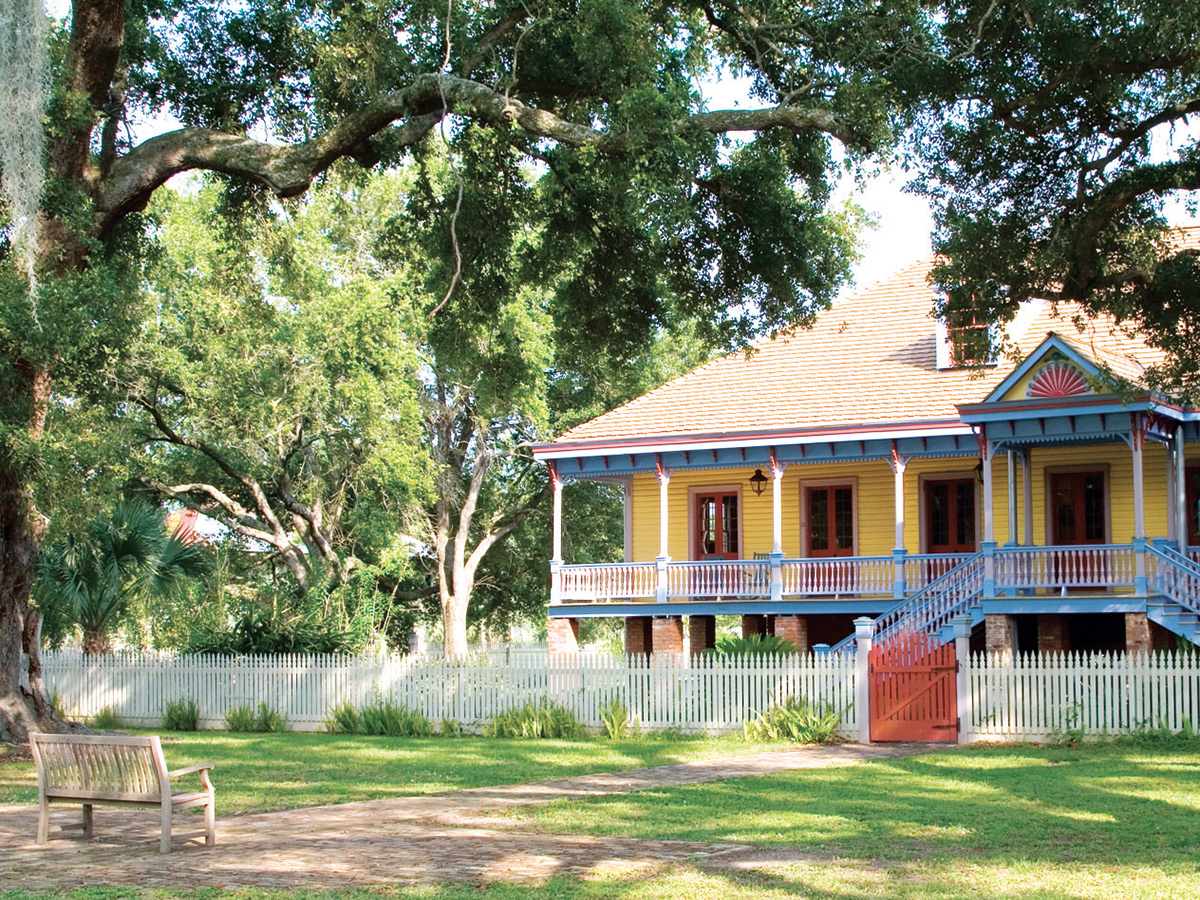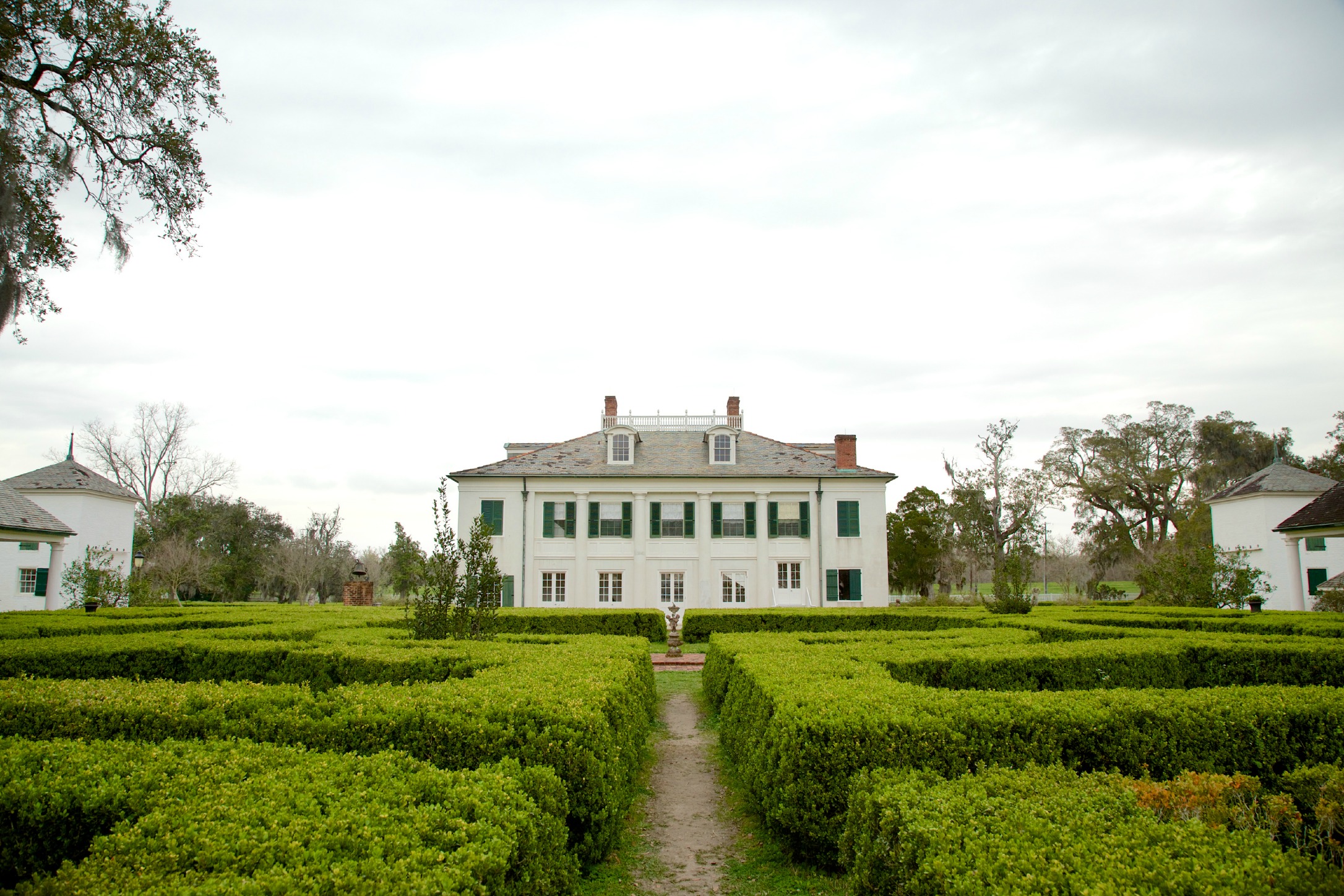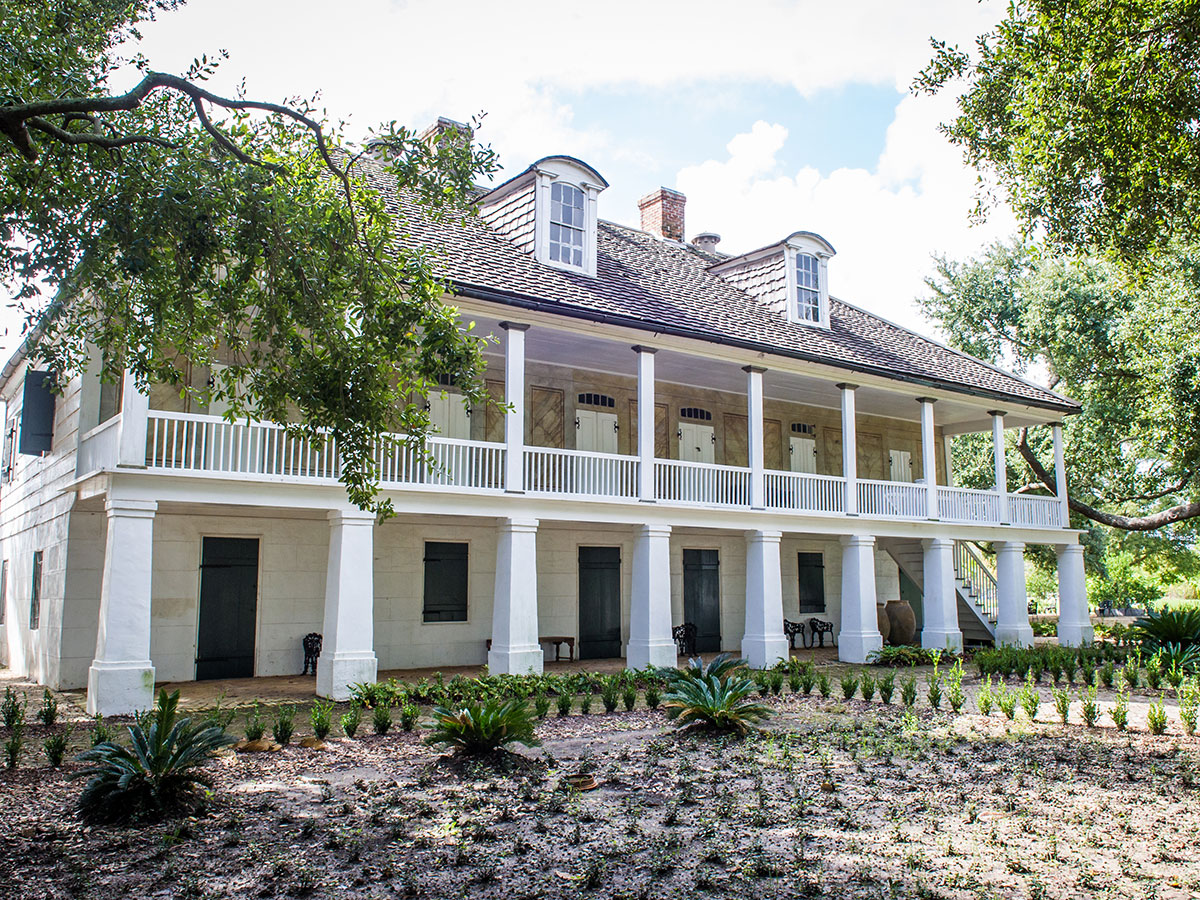Historic Plantations
Louisiana is home to a number of historic plantations. Not only are they architecturally significant, but they also offer the opportunity to learn the stories behind these homes — and the enslaved people who labored there — through educational tours, museums and demonstrations.
Located in Wallace, Louisiana, on the grounds of a historical sugar, rice and indigo plantation established in 1752 is Whitney Plantation. A unique experience, tours of Whitney focus exclusively on the lives of the enslaved. Through museum exhibits, memorial artwork, restored buildings and hundreds of first-person slave narratives, visitors to Whitney will gain a unique perspective on the lives of the over 100,000 people held in slavery in Louisiana.
The Evergreen Plantation tour gives visitors a look into plantation culture in Louisiana, based on 500 pages of documentation. It is the most intact plantation complex in the South and includes twenty-two original cabins for the formerly enslaved. Evergreen has done important work in documenting the site’s archaeological and cultural legacies, enhancing our knowledge of the African Americans who lived there. With thirty-seven buildings on the National Register of Historic Places, Evergreen has the country's highest historic designation and joins Mount Vernon and Gettysburg in being granted landmark status for its agricultural acreage.

Laura Plantation

Visit the Evergreen Plantation.

Whitney Plantation
Visit Laura Plantation, where Louisiana historian and folklorist Alcée Fortier first recorded the West African stories of Compair Lapin, known today as the Br’er Rabbit stories. Laura Plantation boasts eleven historic buildings on the National Register, including the slave cabins where the Compair Lapin stories were recorded. The plantation offers a permanent exhibit dedicated to telling the authentic story of the enslaved people of this Créole farm. Here, the compelling personal stories of individual men, women and children are told, along with a large collection of purchase documents and rare photographs that bring to light the names and faces of these long-forgotten people.
In north Louisiana visitors can tour Frogmore Plantation & Gins, a working cotton plantation. Available group tours offer visitors a variety of experiences and education, including the history and methods of cotton harvesting from the 1800s through modern day processes; a delta music tour that blends song and narration to relate the trials of life on a plantation; and a Civil War tour about the effects of the war on plantations and their people.
These are just a few of the plantations and historic homes open for public tours in Louisiana. Each experience and tour is unique, covering architecture, agriculture and the complicated and storied history of Louisiana.
